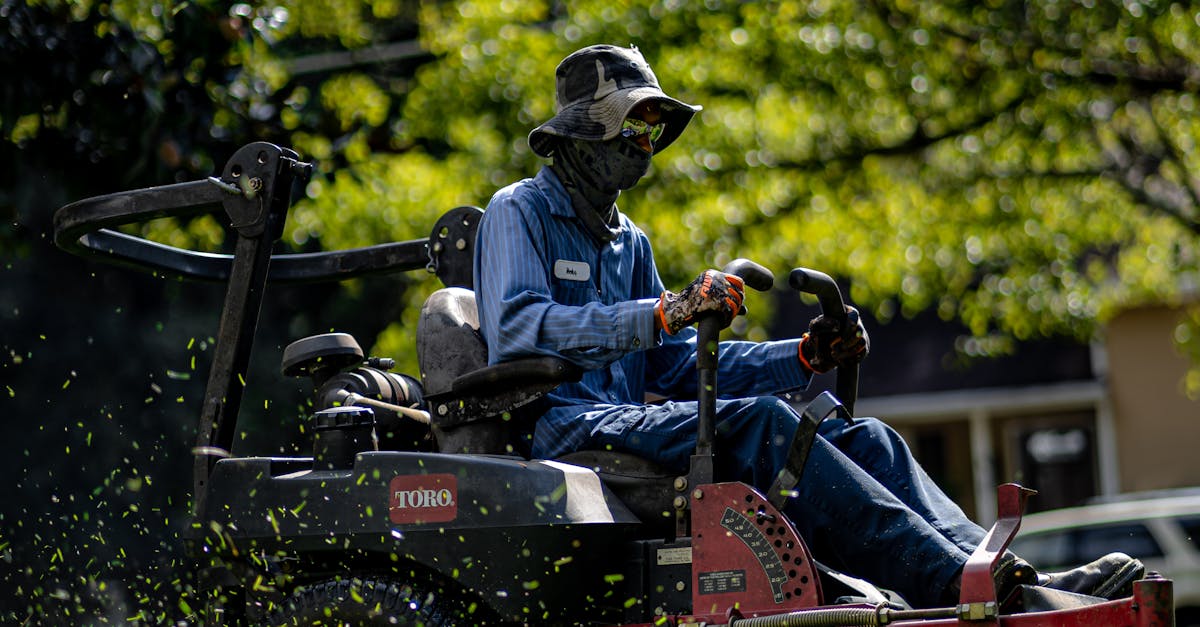
Turf Management
Turf Management
Maintaining a beautiful and lush lawn often requires a multifaceted approach, one essential aspect being Grub control for lawns. Grubs, the larvae of various beetles, can wreak havoc on your yard if not properly managed, leading to unsightly brown patches and weakened grass. Understanding the importance of grub control for lawns is crucial for homeowners looking to preserve the health and aesthetic appeal of their outdoor spaces. Addressing this issue promptly helps ensure your yard remains vibrant and can withstand environmental stresses.
Additionally, effective grub control for lawns is not just about preventing damage but also about promoting overall lawn health. A proactive strategy involving regular inspections and targeted treatments can make a significant difference, allowing grass to thrive with minimal disruption. Adopting proper grub control for lawns contributes to a robust turf management plan, ensuring your lawn stays resilient against pests while enhancing its overall growth and appearance. Whether you're a seasoned gardener or a homeowner new to lawn care, understanding the role of grubs and implementing effective control measures is essential for maintaining yard upkeep.
Watering Techniques for Lush Lawn
Establishing effective hydration techniques is key for maintaining the vibrant grass. This involves recognizing various demands for the lawn according to elements like climate, soil type, and varieties of grass. Thoroughly hydration once a week is generally advised because it supports deeper root growth.
Furthermore, timing plays a significant role in successful lawn care. Hydrating early in the morning is the best option to minimize water evaporation and help the lawn to utilize water effectively. Utilizing sprinklers that offer a gentle distribution of water might assist keep the moisture in the soil while preventing runoff. Monitoring local weather patterns also guarantees you can water the grass in a timely manner.
Guidelines for Proper Irrigation Strategies
Proper watering can be the essential component in maintaining a healthy lawn. Grasping the amount required for moisture your grass needs is vital. This is recommended to water early in the morning when heat are cooler. Watering at this time enables the water to soak deeply into the soil prior to evaporating in the heat of the day.
Moreover, adopting efficient watering techniques can help conserve water while encouraging a lush lawn. Evaluate using a soaker hose or drip irrigation system to deliver water directly to the roots avoiding unnecessary runoff. Keeping track of soil moisture can also aid inform when it is time to water again. By implementing these tips, you can achieve a healthy and thriving lawn.
Choosing the Appropriate Lawn Breed to Fit Your Conditions
Finding the best turf breed is important to achieve a thriving turf. Different turf types flourish under specific environmental circumstances. For example, cool-season types like perennial ryegrass grow well in cooler regions, while warm-season types like Bermudagrass thrive in hotter climates. Understanding your regional conditions plays a key factor when determining which turf breed to use.
When you have a grasp on your conditions, the following step is to evaluate other aspects that can influence your turf choice. Earth type, sun exposure, and moisture availability all contribute in how well a certain turf breed will establish. For instance, if you have clay soil, you might want to opt for turf varieties that are more tolerant to those conditions. Also, if your lawn receives full sun, selecting a turf that thrives in sunlight will ensure a more healthy landscape.
Factors when Choosing the Grass Variety
Choosing the appropriate grass type is often important to attaining a healthy yard. Things to think about involve the climate elements in the local region. Warm season types do best in warm conditions, whereas cool-season flourishes best in cooler seasons.
Another consideration is the lawn's intended use. High-traffic require hardier turf that are able to endure wear and tear. Additionally, soil type along with sunlight need to be assessed to ensure the picked turf will grow well in its surroundings.
Sustainable Yard Care for Earth-Friendly Gardeners
Maintaining your lawn with an organic approach not only aid the environment, and it supports the health of your yard. Employing natural fertilizers and pest control methods which are safe for both people and non-target species can be a great decision for individuals looking to minimize the impact on nature.
Applying organic techniques like the use of compost clippings to act as mulch or installing native plants can boost the health of your yard's look while preserving native species. Opting for native turf that demand less water and are more resilient in response to local climates can be an effective way to guarantee a vibrant lawn without unnecessary resource use.
Reasons to Choosing Organic in Your Grass
Choosing sustainable approaches in your grass delivers numerous advantages. One significant advantage is the positive impact on the surroundings. Sustainable practices lessens the use of harmful chemicals that can pollute air and negatively affect local wildlife. By implementing these practices, you contribute to a healthier planet while enjoying a lush and vibrant grass.
A further benefit of opting for organic lawn care is enhanced soil health. Sustainable nutrients foster the growth of beneficial microorganisms in the soil, leading to improved nutrient availability for your lawn. Healthier soil results in more drought resistance and minimized susceptibility to pests and diseases. In the end, going sustainable is not only beneficial for the environment but also creates a thriving and resilient grass.